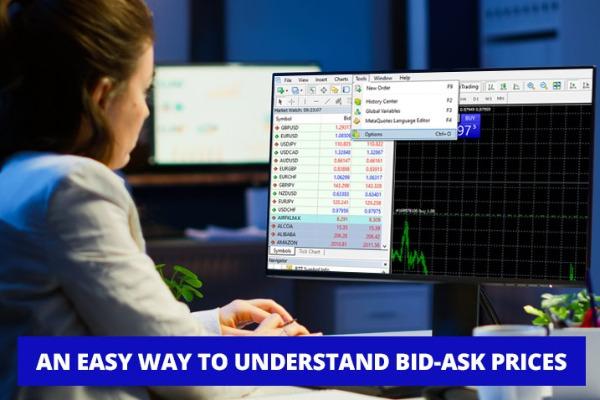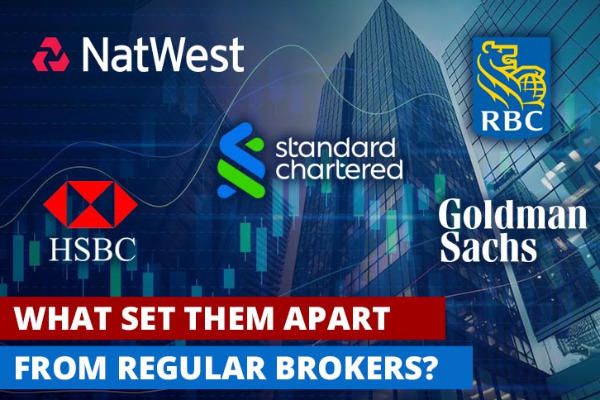When you trade bond CFDs, you do not directly buy or sell any bonds. But you will gain the difference between the opening and closing prices of the underlying bond.

Bond CFDs are less popular among traders compared to precious metals and stock index CFDs. Why? A bond itself is a relatively complex financial instrument, let alone a bond CFD.
The less people learn about it, the less people are interested in trading it. Nonetheless, bond CFD trading offers various advantages and may be more profitable for the right person. Read the article to learn about bond CFDs, how they work, and more.
What Are Bond CFDs?
We have to first distinguish between "bond" and "bond CFD". A bond is a type of fixed-income instrument that corresponds to a loan provided by an investor to a borrower (similar to an I.O.U.). On the other hand, a bond CFD is a form of derivative trading in which the aforementioned bond serves as its underlying asset.
Every bond has distinctive details, including:
- Issuer: a corporate or government entity that issued the bond in order to gather funds for their projects.
- Par value, or face value: the original sum of the loan that must be paid back by the issuer to the bond investors (bondholders).
- Coupon rate: a bond coupon rate is a variable or fixed interest payment promised by the issuer. The issuer has to pay the interest periodically until the bond's maturity.
- Maturity date: a bond maturity date is the time when the issuer has to repay the original bond value to the bondholders.
Investors are allowed to buy or sell bonds in the market before their maturity date. As such, a publicly traded bond will have a "bond price" that is different from its face value.
Bond CFDs are derived from bond trading. Each bond CFD transaction uses a particular bond as the underlying asset of a Contract for Difference (CFD).
Bond CFDs are organized by brokers as over-the-counter (OTC) transactions. When you trade bond CFDs, you do not directly buy or sell any bonds. Instead, you will gain the difference between the opening and closing prices of the underlying bond. Any loss and profit will be settled in cash without physical bond deliveries.
Not all bonds are available for CFD trading. Bond CFD trading requires high liquidity, and so brokers will carefully choose underlying assets from bonds that are traded at a higher frequency and have more prospective buyers.
Bond CFD trading usually involves popular sovereign bonds as their underlying assets, such as US 5-Year Treasury Notes, US 10-Year Treasury Notes, US 30-Year Treasury Bonds, Japanese 10-Year Government Bonds, Euro Schatz, Euro Bund, and many others.
How Do Bond CFDs Trading Work?
A broker offers various bond CFDs with a margin rate of 1%, which means you only have to deposit 1% of the total trade value in your account.
Suppose you want to trade bond CFDs with the US 10-year Treasury Note (US10YR) as its underlying asset. The current bid is $93.62, and the ask is $93.76.
You believe that the US Federal Reserve will raise interest rates, which will lead to an increase in 10-Year Treasury yields. Because bond yields and bond prices have an inverse relationship, you decide to sell 10 contracts of US10YR at the current bid price of $93.62.
Because your margin rate is 1%, you only need to set aside 1% x (10x$93.62) = $6.362 in your account for this trade.
Your analysis is correct, and US10YR bond prices declined. Then you decide to close the trade at $90.32. Your trade's gross profit will be 10 x ($93.62-90.32) = $33.
Quite simple, don't you think? Of course, you may also suffer losses from the trade if your analysis is incorrect. Therefore, it is important to do your homework conscientiously on both the technical and fundamental fronts.
Why Trade Bond CFDs?
Bonds occupy a special place among worldwide investor's favorite assets because they are a safer type of investment that offers fixed income for longer-term goals. However, bond CFDs may be more attractive for shorter-term traders because of three reasons:
- Higher leverage: When buying bonds directly, you have to provide the full amount of funds. But bond CFDs come with high leverage, which makes it possible for you to profit from bonds with fewer deposits (see the case study above).
- Lower contract size: Popular sovereign bonds come with a high minimum purchase (at least $100 for US10YR on the TreasuryDirect website or $1000 via top US brokers). Bond CFDs cut it down to a minimum because each contract size may equal a fraction of the real bonds.
- International participation: To buy a sovereign bond, you are required to register yourself as an investor in the related country. However, you can trade bond CFDs with any online CFD broker, wherever you are.
Bond price movements are relatively more predictable and less volatile than major currencies and stock indices. Bond prices also tend to move in the opposite direction of other assets. As such, bond CFD trading may enrich our portfolio and act as a counterbalance for more high-risk assets.
The relationship between bonds and other financial assets could be different for each type of asset. For currency, you can learn in "Why Do Bonds Affect Currency Movements?"

 Dedicated FREE FOREX VPS
Dedicated FREE FOREX VPS Free FOREX Virtual Private Server
Free FOREX Virtual Private Server MT4 Demo Contest, Get $500
MT4 Demo Contest, Get $500 Sign Up for an Account, Claim 60% Deposit Bonus
Sign Up for an Account, Claim 60% Deposit Bonus Free MT4/MT5 VPS 2024
Free MT4/MT5 VPS 2024 Send E-mail and Get Free Merchandise
Send E-mail and Get Free Merchandise $1K Refer a Friend Bonus for Pepperstone Pro clients
$1K Refer a Friend Bonus for Pepperstone Pro clients Maximize Your Earnings with 100% Deposit bonus
Maximize Your Earnings with 100% Deposit bonus Trade to Win, $5,000 Monthly Demo Contest
Trade to Win, $5,000 Monthly Demo Contest Claim 30% + 15% Deposit Bonus from LiteFinance
Claim 30% + 15% Deposit Bonus from LiteFinance











